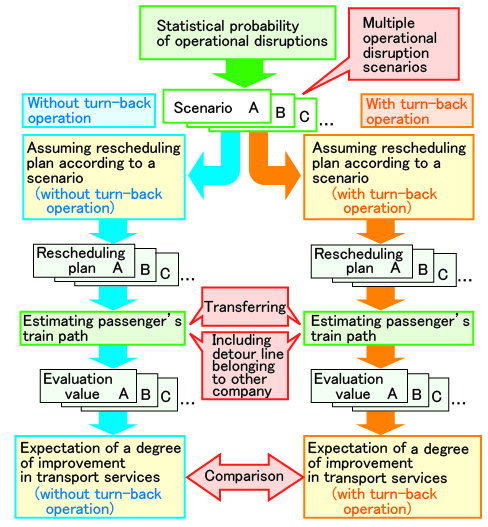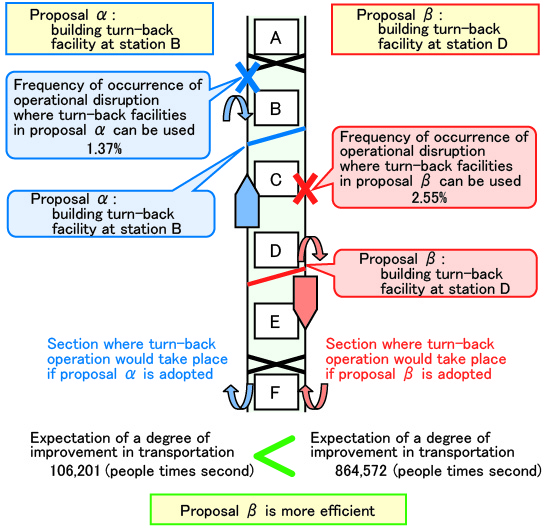4. Method to quantitatively evaluate turn-back facilities as a means to prevent amplification of operational disruptions
- A method was developed to quantitatively evaluate the efficiency of newly built turn-back operation facilities.
- This method also makes it possible to reflect the frequency of operational disruptions and assess the easiness of turn back operations on the train timetable.
- The method offers comprehensive evaluations which take into account whether passengers managed to reach their destination or not by using alternative transport means.
Over recent years, in order to improve service quality and prevent ripple effects of traffic disruptions, it has been considered to provide temporal shuttle services by installing turn back facilities between intermediary stations. As building such facilities requires sizeable investments, it is desirable to objectively and quantitatively evaluate from the viewpoints of passengers, when deciding to build new facilities and determine the stations where they should be constructed. However, given the broad range of factors that need to be considered for an appropriate assessment, such evaluations have almost never actually been completed in practice.
Subsequently, a quantitative evaluation method for turn back operation facilities was developed reflecting several considerations. First of all, the frequency of disruption and time required to turn back shuttle service trains was taken into account. Also, an automatic rescheduling process and estimation method for passengers’ train paths for destination was designed, including passengers’ detour behavior by using another rail line. Then, the evaluation value was calculated based on the differences of the level of transportation services for passengers between both conditions with and without the turn-back facilities (Fig.1). The feature of this method is that it can distinguish the change in level of convenience for passengers based on whether or not they can take a service on another company line .
Applying this method to a metropolitan commuter rail line, we concluded that it was possible to quantitatively judge the utility of two plans to install turn-back facilities (Fig.2).

Fig.1 Quantitative evaluation method for turn back facilities
Fig.2 Example of evaluation of new proposed facilities
using the developed method